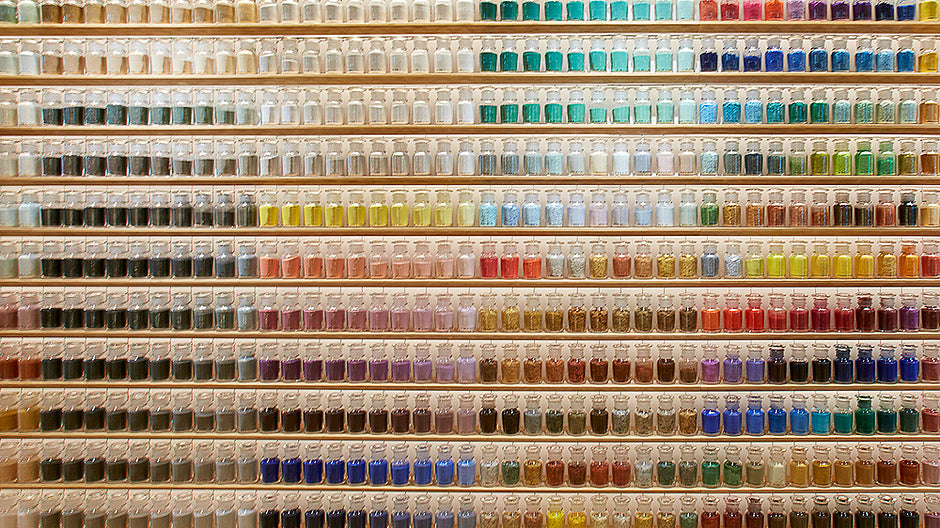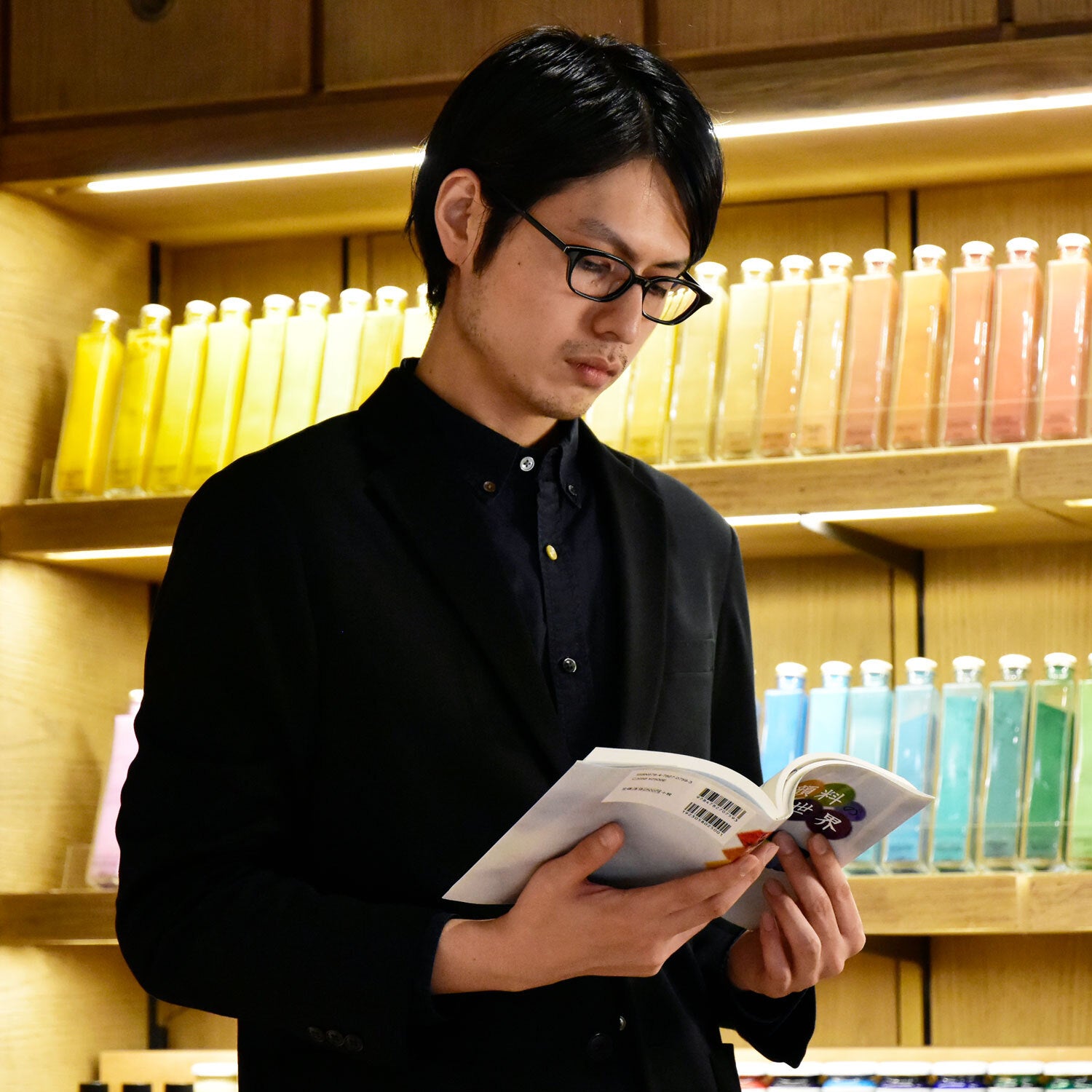―In the previous article, you told us about the 4500 colors in PIGMENT. What are the colors that have been used from ancient times?
People have used Gunjo (blue), Rokusho (green), and Gunryoku (the combination of the two) from long time ago.
―What are the features of natural mineral pigments in short?
Well, since they are all made from the natural objects, the colors are calm compared to synthetic pigments.
―I see. So, were all the Japanese paintings painted with natural mineral pigments?
Actually, they weren’t.
―Really?
Yes, it is true that Gunjo and Rokusho have been used since a long time ago, but it is only after Showa period that people used only natural pigments for Japanese paintings. Before the Edo period, when people said Japanese paints, it referred to these two colors.

―Then, what kind of pigments was used at that time?
People used natural pigments other than minerals, such as yellow ocher, red ocher and iron oxide. Although it is not completely “natural”, there were pigments made from cinnabar, lead and gofun, which are made from shells of oysters and clams.

―Don’t you need more colors to paint?
You’re right. There are only blue, green, yellow, brown, red, white and black from sumi ink, which is not sufficient enough for creating paintings.
―Besides, because each pigments is made from different materials, isn’t it hard to mix colors like tube colors?
Yes, so this is where artists used gofun that I mentioned earlier. The colors were limited for the natural pigments, but there were many colors for dyes, which they mix with gofun to make paints.
Indigo and bordeaux are one of the examples. By mixing two, they create purple colors.
Also, you can create green colors by mixing indigo and yellow-based dye and grey colors by mixing sumi ink and gofun. They are collectively called Guenogu and Guzumi, meaning adding filling to the liquid colorants.

―Oh, I did not know that.
Furthermore, because natural mineral pigments have bigger particle, it requires considerable amount of pigments in order to have the flat surface, However, natural blue and green pigments were much more expensive than now, so artists painted the indigo guenogu (mixture of dye and gofun) as a base and painted the natural blue pigments over it. This expression also gives the hybrid surface with the texture of mineral pigments and beautiful color of gofun.

―In that sense, gofun is the essential materials in Japanese paintings.
Yes. Therefore, in painting before the Edo period, people valued these fusions of colors and textures created by different materials.



